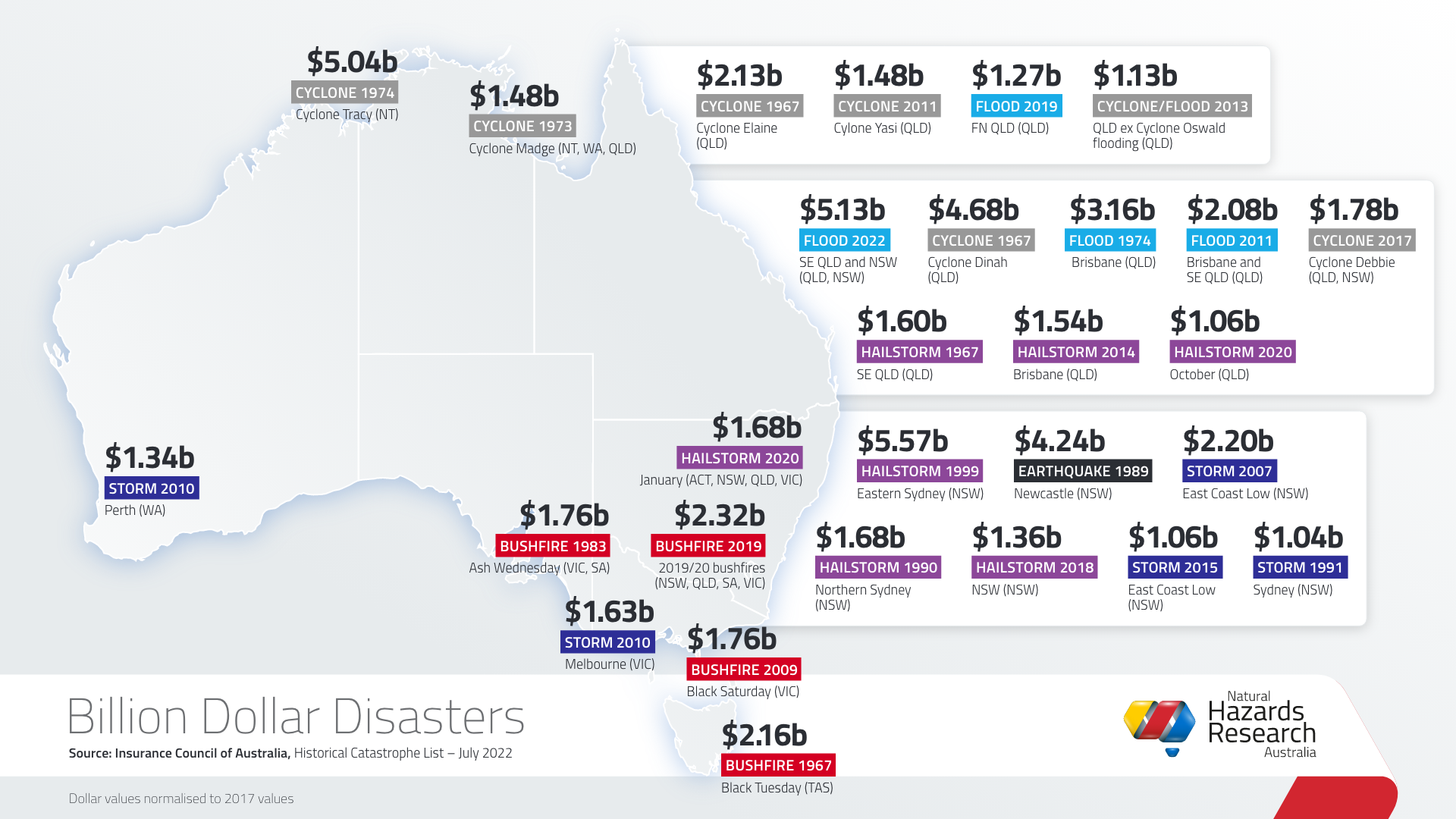
This week is National Water Week – a time to reflect on the role that water plays in our lives, environment and economy. The theme this year is Our Water Stories.
Over the last three years, with sequential episodes of La Niña, Australian communities have written new water stories as they have suffered through multiple severe floods. Many have not been able to recover before again suffering flooding. In terms of financial loss, research has shown that periods of La Niña are more damaging than El Niño.
As we enter National Water Week, flooding is occurring in all four eastern states. Flooding in Victoria threatens several thousand properties and new records have been set. For example, at Rochester on the Campaspe River, the previous flood record set in 2011 has been exceeded, resulting in the inundation of the entire town.
Earlier this year, we saw Lismore’s previous record flood exceeded by more than two metres, only to be repeated by another major flood within a month. Flooding across New South Wales and Queensland during February and March has cost more than $5.45 billion in insured losses. According to the Insurance Council of Australia’s Historical Catastrophe List, this makes it Australia’s second most expensive disaster in terms of insurance losses. This amount does not include damages to infrastructure and broader economic and social costs, which are significant.

Lives have been lost and sadly this is often due to people entering floodwater. This loss of life is avoidable. Our research has shown that entering floodwater is an entrenched behaviour and is the leading cause of death during floods because people underestimate the danger and overestimate their abilities. Learn more about how the findings of our research on communicating flood risk effectively are being used in this short documentary.
Research shows that risk-informed-investment in flood mitigation is cost effective. Effective flood management requires the adoption of an integrated approach consisting of a range of measures specifically designed to the context of flood prone communities. Our research can provide the data to support both the choice and the implementation of such measures that keep people safe and mitigate the impacts of floodwater. This includes insights into warning systems, buy-backs, house raising, levees, dams, emergency planning, water sensitive urban design, risk-based land use planning, community engagement and more.
Recent floods provide an important research opportunity to guide the improved safety of communities, informed by the stories being collected from affected communities, businesses and local governments. Following the NSW and Queensland floods, Natural Hazards Research Australia has instigated a project to investigate community behaviour during and following the floods. This will assist our partners in identifying opportunities to improve policy and practice.
Further flooding is expected across the eastern states over the coming weeks, with impacts likely to be felt for months as water drains downstream, disrupting other communities. As our response agencies take to the field and our recovery agencies ramp up their own deployment, it is essential that we, as a natural hazards research centre, harness the opportunity to gather immediate data across a range of factors to support the best decisions today and tomorrow. This will ultimately equip our communities with the knowledge to be safe while under threat from future floods.
